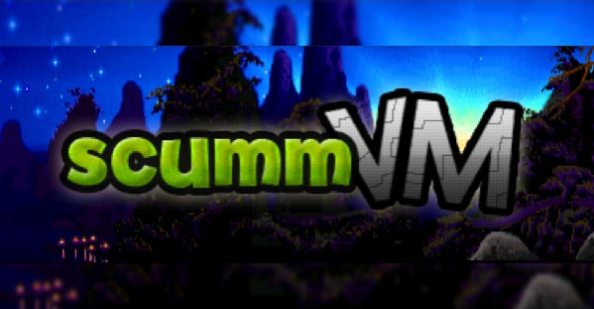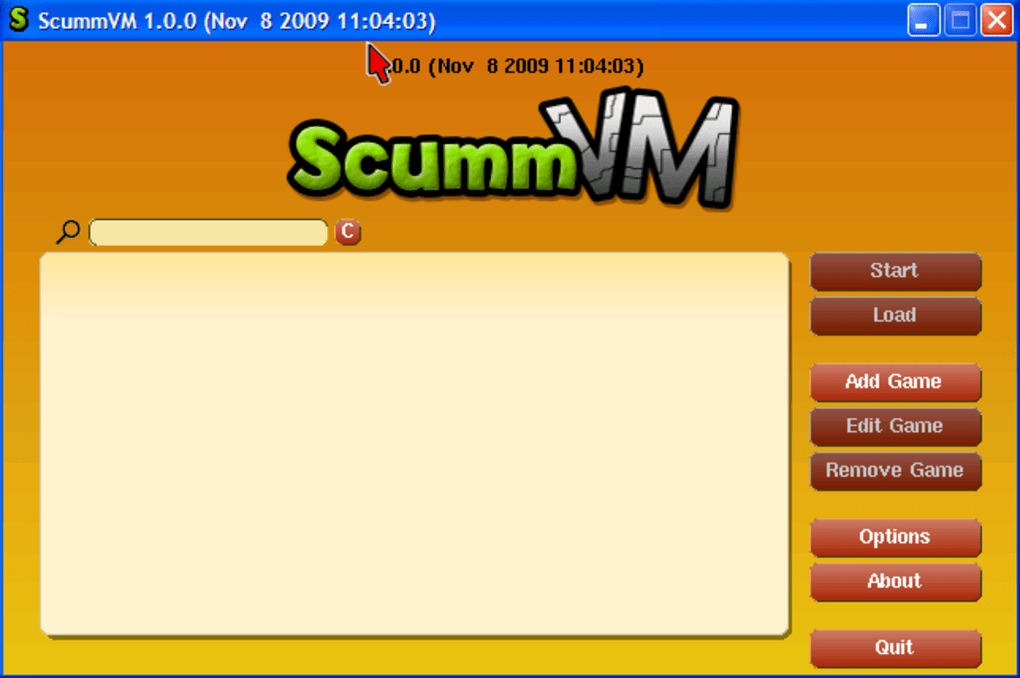
If you want to keep saved games use ScummVM’s cloud or LAN functionality to keep those files. If ScummVM is uninstalled or downgraded, its internal and external app spaces are fully deleted. The ScummVM team is currently working on a fix. On some newer devices, there is an issue if the saved path is outside the app’s internal (or external) storage. Run the server to access the scummvm.ini configuration file.įor more information, see the Using the local web server page. Select the ScummVM data (int) shortcut, and tap Choose. Use the file browser to Go up to the root of the ScummVM internal app folder. To access the internal app folder, use ScummVM’s built-in LAN functionality:įrom the Launcher, select Options and then the LAN tab. The configuration file is in the internal app folder, and this path cannot be changed. To change the path, go to the Paths tab in either the global or game-specific settings. Paths ¶ Saved games ¶īy default, the saved games are saved in the internal app folder. To hide the virtual keyboard, tap the small controller icon (which became a keyboard one) again, or tap outside the text field.

To open the virtual keyboard, long press on the small controller icon at the top right of the screen, or tap on any editable text field. Tick the Show on-screen control box to enable the menu icon. To display or hide the small menu icon, from the Launcher select Options and then the Backend tab. To open the Global Main Menu, tap on the small menu icon at the top right of the screen. Your swipe also registers in the game, so if you need to swipe from an edge with system bars, your game play is not interrupted. They remain semi-transparent and disappear after a few seconds unless you interact with them. Swipe from the edge to reveal the system bars.
#SCUMMVM IOS FOR ANDROID#
ScummVM for Android uses the Immersive Sticky fullscreen mode, which means that the Android system bar is hidden until the user swipes from an edge with a system bar. Imagine you are impatiently tapping your fingers on a surface, but then slow down that movement so it is rhythmic, but not too slow. To do a three finger tap, start with holding down one finger and progressively touch down the other two fingers, one at a time, while still holding down the previous fingers. To do a two finger tap, hold one finger down and then tap with a second finger. Tick the Show on-screen control box to enable the controller icon. To display or hide the small controller icon, from the Launcher select Options and then the Backend tab. The touch mode can be switched at anytime by tapping on the controller icon, next to the menu icon at the top right of the screen. The pointer speed setting in the Controls tab affects how far the pointer moves in response to a finger movement. The fingers must be placed on lower left and right of the screen and respectively emulate a directional pad and action buttons. Gamepad emulation, the touch controls don’t move any mouse. The finger can be far away from the pointer and still move it, like on a laptop touchpad.

Touchpad emulation, the touch controls are indirect. The pointer jumps to where the finger touches the screen (default for menus). It’s possible to configure the touch mode for three situations (ScummVM menus, 2D games and 3D games) and choose one of the three possible modes:ĭirect mouse, the touch controls are direct. From the Launcher, go to Options > Backend > Choose the preferred touch mode. The touch control scheme can be configured in the global settings. Three finger tap + movement of third finger Right mouse button hold and drag, such as for selection from action wheel in Tony Tough

Two finger tap + movement of second finger Left mouse button hold and drag, such as for selection from action wheel in Curse of Monkey Island See the Keyboard shortcuts page for common keyboard shortcuts. Controls ¶ Default control mapping ¶Ĭontrols can also be manually configured in the Keymaps tab. See Handling game files for more information about game file requirements. An Android File Transfer window opens.ĭownload games such as freeware games or those from digital distributors directly to your device. Select Use USB for and then File Transfer. To complete file transfer by USB cable, tap the Charging this device via USB notification when the device is connected. Copy the files directly onto the microSD card, if the device has one.


 0 kommentar(er)
0 kommentar(er)
